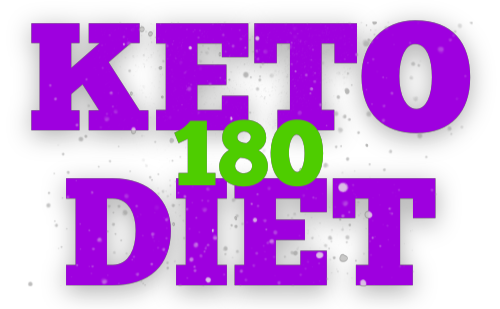Understanding the right loan type for your financial situation can be overwhelming but crucial. Whether you’re wondering how to align a loan with your income or evaluating options for those with bad credit, this guide will help you comprehend the factors involved. Different borrowers have varied needs, making it essential to assess your circumstances thoroughly.
Freelancers often face unique challenges in securing loans compared to traditionally employed individuals. Questions arise about the usefulness of secured loans in providing flexibility and security. Additionally, evaluating the ideal repayment term that aligns with your income stability is vital. Making informed decisions involves assessing your potential to manage loan conditions without jeopardizing financial health.
Interest rates are another critical consideration; choosing between fixed and variable rates can impact your financial planning. A fixed rate provides predictability, while a variable rate could offer savings in certain economic conditions. As you explore these aspects, understanding how they apply to your specific financial profile will guide you in selecting the most suitable loan type.
Choosing the Right Loan for Your Income
When determining a suitable loan for your income, it’s critical to assess your budget and financial commitments. Calculate your monthly income and subtract essential expenses such as rent, groceries, and utilities. By understanding your disposable income, you can determine how much you can reasonably afford to repay monthly on a loan without straining your finances.
Another crucial step is to examine your current debt obligations. Analyzing your debt-to-income ratio can provide insights into how a new loan payment would fit into your overall financial picture. Ideally, keeping this ratio below 40% ensures you have a balanced financial life. Consider the impact of additional debt on your ability to manage unexpected expenses.
Opt for loans that match your financial stability. For a steady and predictable income, installment loans or personal loans with fixed payments may be suitable. If your income fluctuates, like that of freelancers, lines of credit offer flexibility, allowing you to borrow according to your needs while potentially digesting variable payments effectively.
Loan Options for Those with Bad Credit
For individuals with bad credit, exploring loans with specialized lenders could provide valuable opportunities. These lenders often offer personal loans specifically designed for those with poor credit, considering other factors such as income and employment stability to assess eligibility. Although interest rates might be higher, improving your credit score could open up better terms.
Secured loans are another option for borrowers with bad credit. By offering collateral, such as a vehicle or savings account, the risk to lenders is reduced, enabling them to extend loans that may not otherwise be available. This form of lending provides both access to needed funds and an opportunity to rebuild credit through consistent repayment.
It is essential to approach lenders known for accommodating those with less-than-perfect credit histories. Research lenders’ reputation, read reviews, and understand the specific terms they offer to ensure transparency. This due diligence helps avoid predatory lending practices, giving you a better opportunity to secure manageable loan conditions that support your financial recovery.
The Role of Secured Loans for Freelancers
Freelancers can benefit from considering secured loans due to their often irregular income patterns. A secured loan, backed by collateral, can offer a sense of security to lenders, potentially resulting in lower interest rates. This makes them accessible options despite the inherent income volatility associated with freelance work.
Access to a secured loan can also provide freelancers with crucial financial flexibility. While major banks might hesitate to lend to those without traditional income, secured loans demonstrate the borrower’s commitment through collateral, leading to increased chances of approval. For freelancers, this can mean a greater ability to manage funds during periods of inconsistent cash flow.
When opting for a secured loan, it’s important for freelancers to evaluate the value of the collateral against the loan amount. Understanding the terms of the loan and the associated risks is crucial, as defaulting could lead to the loss of the asset. Careful consideration ensures freelancers can protect their assets while benefiting from improved borrowing conditions.
Assessing the Ideal Repayment Term
Choosing the right repayment term involves balancing repayment manageability with interest costs. Shorter terms generally lead to higher monthly payments but result in lower total interest costs. Conversely, longer terms reduce monthly payments, increasing total interest. Finding a term that fits your financial capacity without causing undue strain is imperative.
Consider the stability of your income when deciding on a repayment term. For instance, freelancers with fluctuating income may benefit from longer terms, providing more flexibility in cash flow management. In contrast, individuals with stable employment might find shorter terms preferable, enabling rapid debt reduction and less interest paid overall.
Evaluate your financial goals alongside loan options. If your priority is reducing debt quickly, a short-term loan might align best. However, if affordability and maintaining liquidity is a concern, a longer repayment term could offer the breathing space needed. Understanding how each term affects your monthly budget will guide you to make an informed and contextually appropriate decision.
Fixed vs. Variable Interest Rates: Making the Choice
Selecting between fixed and variable interest rates rests on assessing personal financial goals and the current economic environment. Fixed interest rates provide stability, with predictable monthly payments protecting you from potential rate increases. This predictability aids in long-term budgeting, making it ideal for individuals seeking consistency.
Variable interest rates, while riskier due to potential rate hikes, can initially offer lower payments. In favorable economic conditions, borrowers might enjoy lower interest expenses, bringing cost savings over time. Those with confidence in future financial flexibility often see variable rates as an opportunity for reduced debt servicing costs.
Evaluate the potential economic shifts if considering a variable rate. While savings might be apparent short-term, unexpected rate increases could strain finances if not managed. Fixed rates provide insulation from such uncertainties, making them the safer choice for those hesitant about interest market dynamics. Weighing personal risk tolerance and financial foresight is key in choosing the best rate type.
Conclusion
Understanding the nuances of various loan types and their related terms is paramount for financial well-being, regardless of income stability or credit standing. By evaluating income, debt obligations, and personal financial goals, borrowers can navigate their options more effectively, ensuring that the chosen loan complements their financial landscape.
The key lies in thoroughly analyzing available options, paying attention to interest rates, loan terms, and lender reputation. With careful planning and informed decisions, borrowers can secure loans that not only meet their immediate needs but also support long-term financial stability and growth, enhancing their overall economic health.


